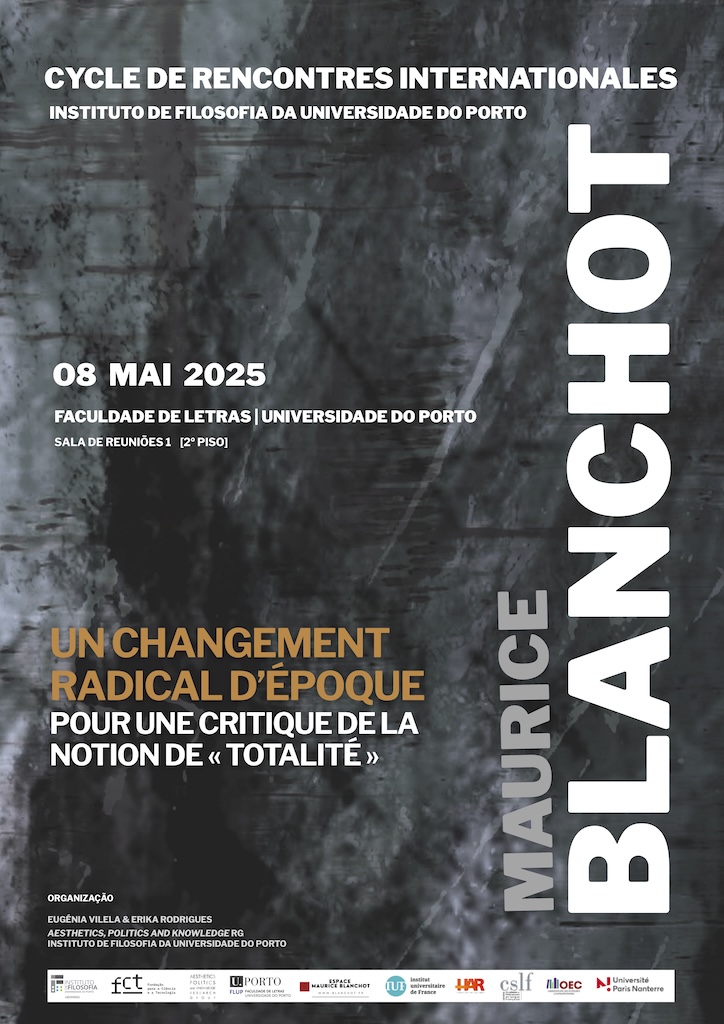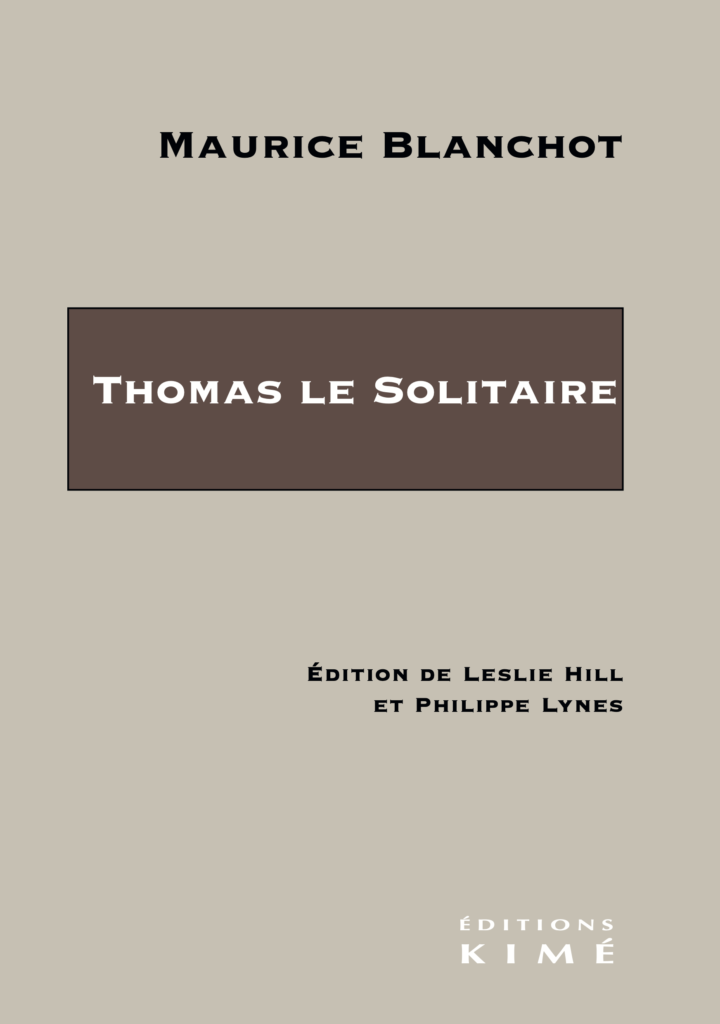
Rencontre internationale Maurice Blanchot
Un changement radical d’époque : pour une critique de la notion de “totalité”
8 mai 2025 – Faculté des Lettres de l’Université de Porto
Liens Zoom:
Matin (10h)
Après-midi (14h)
Le Cycle de Rencontres Internationales Maurice Blanchot constitue une série de rencontres scientifiques permanentes consacrées aux études blanchotiennes, organisées dans le cadre de l’Institut de Philosophie de l’Université de Porto | Groupe de Recherche Esthétique, Politique et Connaissance, sous la coordination scientifique et l’organisation d’Eugénia Vilela (FLUP | UP | APK – IF) et d’Erika Rodrigues (UP | APK -IF), en collaboration avec Alain Milon (Université Paris Nanterre) et l’Espace Maurice Blanchot – dirigé par Christophe Bident (Université de Picardie Jules Verne), Jérémie Majorel (Université Paris Nanterre), Parham Shahrjerdi (Forums du Champ lacanien).
La Rencontre Internationale Maurice Blanchot | 2025, intitulée Un changement radical d’époque : pour une critique de la notion de « totalité » présente une question philosophique qui se déploie de différentes manières dans l’œuvre de Maurice Blanchot : la problématisation des projets hégémoniques de construction de l’idée de « totalité ». En ce sens, on analysera la multiplicité des plans notionnels qui traversent l’idée de « totalité », en considérant l’affirmation d’une dimension absolue et infinie d’engendrement. Nous essayerons, ainsi, de penser les forces qui interrompent violemment les présupposés conceptuels impliqués dans les tentatives d’instauration d’une pensée totalitaire, produisant « un changement radical d’époque ».
La Rencontre Internationale Maurice Blanchot | 2025 aura lieu à la Faculté des Lettres de l’Université de Porto, le 8 mai 2025, dans le cadre du Groupe de Recherche Esthétique, Politique et Connaissance de l’Institut de Philosophie de l’Université de Porto.

